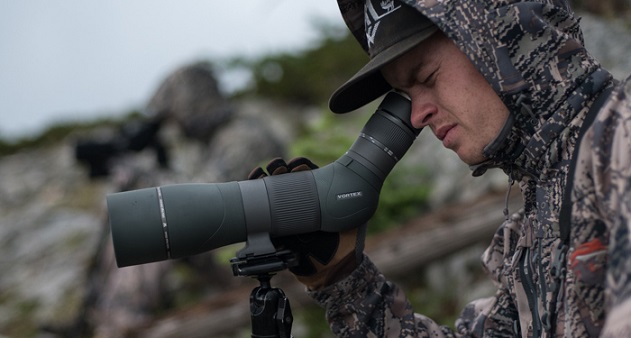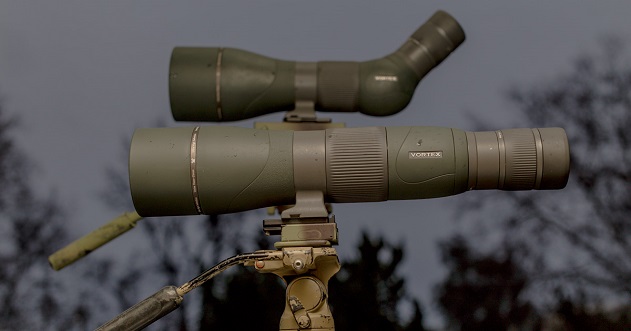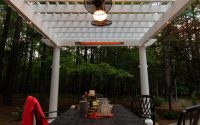Hunting 101: How to Choose the Right Spotter Scope for Your Shooting or Hunting Need
Whether you’re an avid hunter who enjoys hunting in the great outdoors or a novice who just started, you should know that your adventure will only be successful if you have the proper hunting gear. And to help you become a better hunter, a variety of modern hunting gear and technology gadgets are now available, such as tactical flashlights and GPS navigators. One piece of equipment that is becoming increasingly popular among hunters is a spotter scope.
Many hunters get away with only bringing a pair of binoculars into the field. However, nothing beats a spotting scope for long-range surveillance over a long period of time.
What Is a Spotter Scope?

Spotting scopes are like small, portable telescopes that are designed for detailed observation of distant objects. They are not as powerful as telescopes, but they are more powerful than binoculars.
The eyepiece magnifies things by many times their original size. It is highly effective in low light and works well during the day when lighting conditions permit, making it a versatile magnification tool and all-around useful optical tool for any outdoorsman.
The ability to zoom in on distant objects is a spotting scope’s most valuable feature. This explains why it’s so popular at sporting events like target shooting, race tracks, and golf tournaments. Still, the best spotting scopes are built with the hunter in mind, and they frequently include features that other types of telescopes do not. To hunt prey in the dark or find animals in broad daylight, they can be outfitted with close-range riflescopes, night vision flashlights, or even thermal imaging devices.
Certain models can also be made portable, allowing hunters to enjoy their hobby while travelling in different habitats such as forests, where wildlife is likely to move around constantly. They’re typically made of aircraft-grade aluminium or stainless steel and are less susceptible to heat waves and atmospheric conditions because they’re waterproof, fog proof, and weather resistant. Spotter scopes are available in a variety of sizes to suit any type of hunting. If you are interested in getting a good scope, here are the features you’ll need to look for.
Magnification
This indicates how amplified the image seen through the scope appears in comparison to your naked eye. A 20x spotting scope, for example, will make something appear 20 times larger than it is when viewed without the scope.
Fixed magnification scopes have a single magnification power that cannot be adjusted. Variable power scopes, on the other hand, have an internal mechanism that allows the magnification to be adjusted. A variable power scope’s magnification power is expressed as a range. A 20-60×80 scope, for example, can be adjusted for magnification ranging from 20x to 60x. You should consider getting a variable power spotting scope, which allows you to zoom in and out as needed.
The objective lens diameter represents the objective lens’s size in millimetres. This is the number following the x in the number of a spotting scope: for example, a 20-60×80 spotting scope has an objective lens diameter of 80mm. The larger the diameter of the objective lens, the more light enters the optics system and the brighter the image. Larger objective lenses also have a higher maximum magnification because the increased light-gathering power allows for more detail when zoomed in.
Objective Lens Diameter

This feature represents the objective lens’s size in millimetres. This is the number following the x in the number of a spotting scope: for example, a 20-60×80 spotting scope has an objective lens diameter of 80mm. The larger the diameter of the objective lens, the more light enters the optics system and the brighter the image. Larger objective lenses also have a higher maximum magnification because the increased light-gathering power allows for more detail when zoomed in.
Field of View
The field of view describes the amount of horizon visible at the specified distance. For example, if you’re looking 1,000 meters away, a spotting scope with a field of view of 122 meters will allow you to see 122 meters across the horizon. The field of view is frequently expressed as a range, such as 108-60 feet @1000 yards. This shows the field of view at the lowest magnification (108 feet) and highest magnification (108 feet) (60 feet).
Eye Relief
Eye relief is the distance between the spotting scope and your eye for optimal viewing. For example, if a spotting scope has a 3-inch eye relief, the eyepiece lens should be three inches away from your eye to get the best image.
Focus Adjustment
You should also think about the style of the focus knob on your spotting scope. All focus knobs allow you to adjust the image for maximum clarity, but they all work slightly differently.
A single focus knob has a single dial for adjusting the focus. These are the most common focus knobs and provide precise focus. They do, however, take slightly longer to dial in than other focus knob styles. Double focus knobs have two knobs for coarse and fine focus. This design makes it simple to make both large and fine-grained focus adjustments. Helical focusers have a ring around the body of the scope. You can change the focus by rotating the ring clockwise or counterclockwise. They are excellent for making quick adjustments and are especially useful when observing objects that change distances.
Is a Straight or Angled Spotting Scope Better?

Angled spotting scopes have an upwardly angled eyepiece. Because the length of the body is shorter and the weight is centred, these are often easier to use by hand. Most angled scopes have a rotatable eyepiece that can be adjusted to find a comfortable viewing position. Because the eyepiece is higher up, you won’t need as tall a tripod, making viewing sessions more comfortable. The angled design also allows for easier viewing from lower positions.
Straight spotting scopes are longer and resemble telescopes. The long, straight profile makes this type of spotting scope easier to pack.
If you’re also using binoculars on the same hunt, a straight spotting scope will help you re-acquire your target when switching optics. Because binoculars and straight scopes are in the same general position, you can see the same target without adjusting your tripod. However, because you’ll need to crouch slightly to see through the scope when it’s mounted on a tripod, they can cause neck discomfort.
Straight spotting scopes are easier to use from higher elevations because the straight tube allows for more comfortable viewing when looking down to lower elevations.
If you intend to use the spotting scope while sitting or standing, an angled spotting scope is best. This will provide you with the most comfortable viewing angle. Choose a straight spotting scope if you intend to glass from a prone position or if you intend to use both binoculars and a spotting scope on the same hunt.



